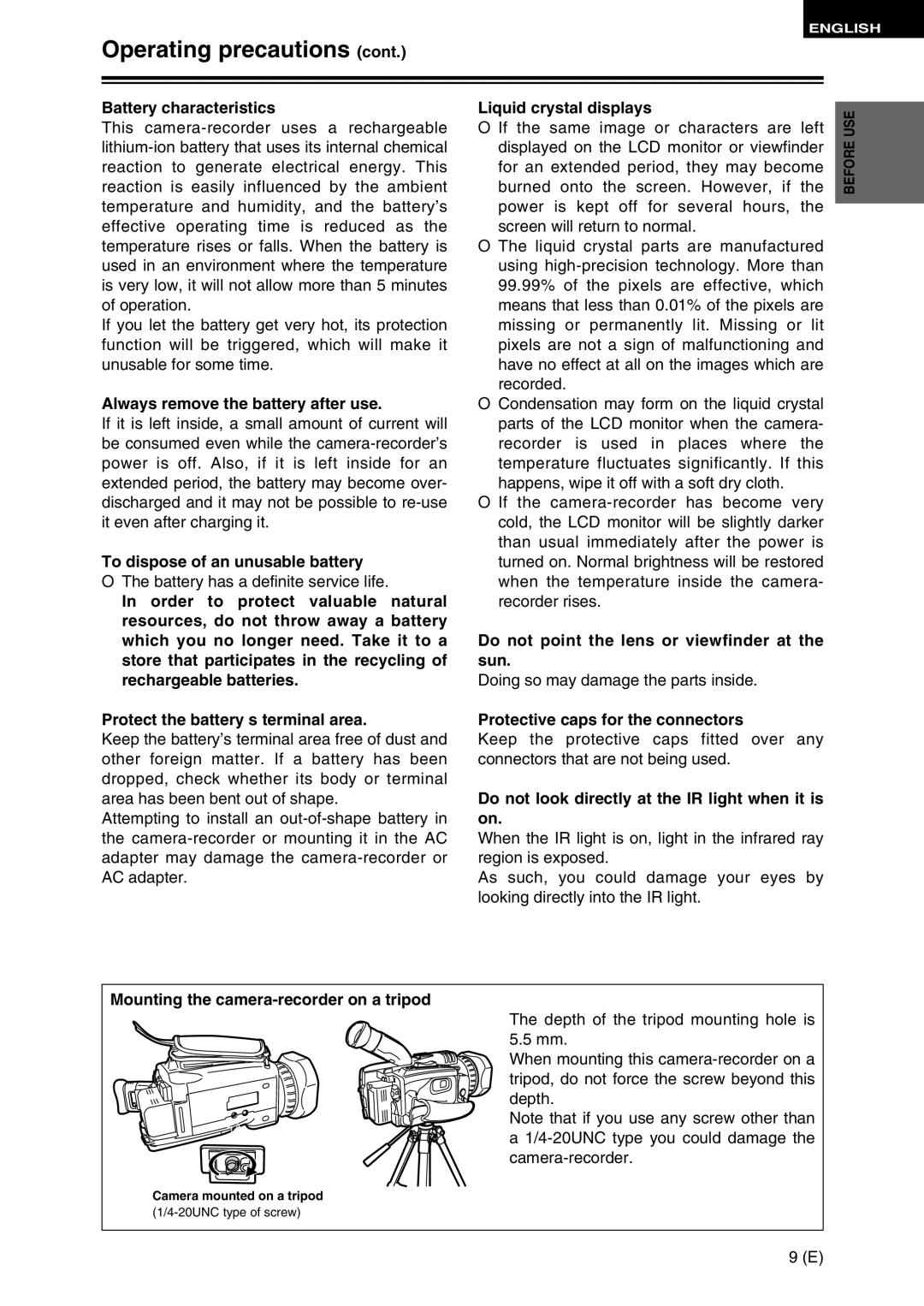
ENGLISH
Operating precautions (cont.)
Battery characteristics
This
If you let the battery get very hot, its protection function will be triggered, which will make it unusable for some time.
Always remove the battery after use.
If it is left inside, a small amount of current will be consumed even while the
To dispose of an unusable battery
O The battery has a definite service life.
In order to protect valuable natural resources, do not throw away a battery which you no longer need. Take it to a store that participates in the recycling of rechargeable batteries.
Protect the battery’s terminal area.
Keep the battery’s terminal area free of dust and other foreign matter. If a battery has been dropped, check whether its body or terminal area has been bent out of shape.
Attempting to install an
Liquid crystal displays
O If the same image or characters are left displayed on the LCD monitor or viewfinder for an extended period, they may become burned onto the screen. However, if the power is kept off for several hours, the screen will return to normal.
O The liquid crystal parts are manufactured using
O Condensation may form on the liquid crystal parts of the LCD monitor when the camera- recorder is used in places where the temperature fluctuates significantly. If this happens, wipe it off with a soft dry cloth.
O If the
Do not point the lens or viewfinder at the sun.
Doing so may damage the parts inside.
Protective caps for the connectors
Keep the protective caps fitted over any connectors that are not being used.
Do not look directly at the IR light when it is on.
When the IR light is on, light in the infrared ray region is exposed.
As such, you could damage your eyes by looking directly into the IR light.
BEFORE USE
Mounting the camera-recorder on a tripod
The depth of the tripod mounting hole is 5.5 mm.
When mounting this
Note that if you use any screw other than a
Camera mounted on a tripod
9 (E)
